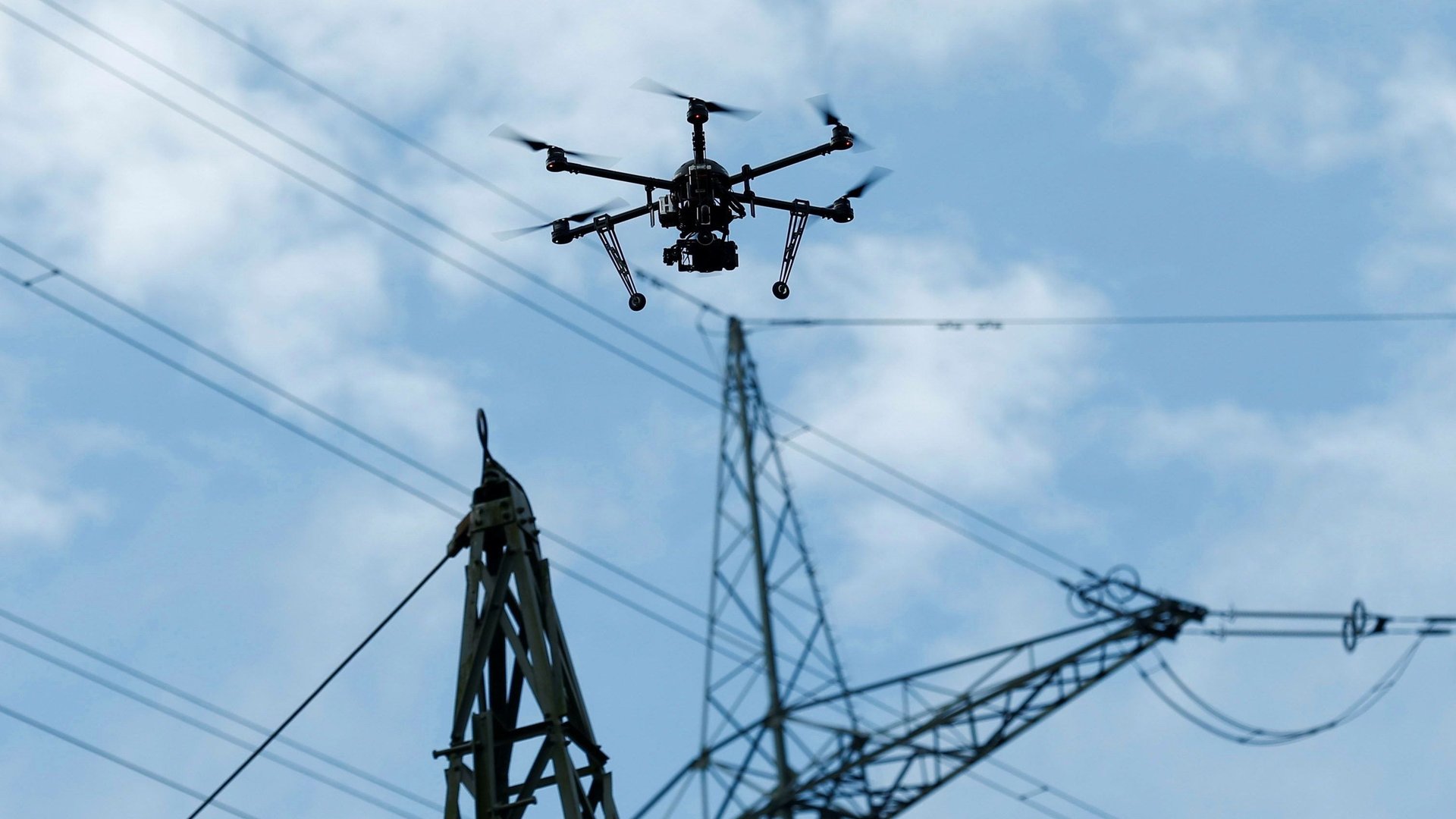Zomato just placed a big bet on drones, but will they deliver?
Four years ago, a Mumbai-based pizzeria’s drone deliveries were stopped in their tracks by local authorities for failing to secure prior permissions and posing security threats. Now, one of India’s biggest food-tech firms is all set to form its drone-based delivery network in the country.


Four years ago, a Mumbai-based pizzeria’s drone deliveries were stopped in their tracks by local authorities for failing to secure prior permissions and posing security threats. Now, one of India’s biggest food-tech firms is all set to form its drone-based delivery network in the country.
Yesterday (Dec. 06), Zomato said it has acquired TechEagle, a Lucknow-based drone startup, which will help it create “a hub-to-hub delivery network powered by hybrid multi-rotor drones.”
TechEagle was founded in 2015 by Vikram Singh Meena, then a student of the Indian Institute of Technology Kanpur. The company’s focus is largely on developing customised unmanned aerial vehicles (UAVs) capable of carrying up to a 5 kilogram payload.
“We are currently at the early stage of aerial innovations and are taking baby steps towards building a tomorrow wherein users can expect a drone to deliver the food they ordered online,” Zomato founder and CEO Deepinder Goyal said in a press release. “We believe that robots powering the last-mile delivery is an inevitable part of the future and hence is going to be a significant area of investment for us.”
But experts are sceptical about the drones sector that’s poised to touch almost $886 million (around Rs6,300 crore) in India by 2021.
“Drone delivery has been a loose cannon in general with very limited real adoption and therefore making a business case on costs is very difficult,” said Yugal Joshi, vice-president at Texas-based consulting firm Everest Group. For instance, five years ago, Amazon had announced it would deploy drone deliveries in the US by 2018 but it’s missed that mark. “Challenges are not only around the tech itself not being real-world ready, but it is also about lack of regulations, delivery insurance, customer readiness, etc,” Joshi added.
Bleed now, benefit later
Originally a search and discovery platform when it was set up by Goyal and Pankaj Chaddah a decade ago, Zomato has added other feathers to its cap: deliveries, takeaway, table reservation, B2B food ingredient supply, and so on. Its food-delivery business has ballooned significantly, currently accounting for 65% of revenues, up from 35% in January.
In September 2017, Zomato acquired hyperlocal logistics firm Runnr to expand its on-ground delivery fleet. Currently, it counts over 15,000 delivery partners in its last-mile efforts. With drones, Zomato wants to expand delivery capacities further for its 75,000 restaurant partners across 100 cities in India.
Now, the food-tech giant is banking on drones, already used for military purposes and in disaster management, to make food deliveries more efficient and cost-effective.
The UAVs themselves don’t come cheap: A commercial drone costs upwards of Rs60,000 ($845) and the price for an industrial one can run beyond Rs10 lakh ($14,095). Comparatively, a Zomato delivery associate is paid less than Rs20,000 a month.
However, despite the initial cash burn, the long-term picture is far rosier.
“Eventually, drones will be cost-effective. They’re electric so they don’t consume any fuel—the biggest advantage keeps operating cost down,” said Mark D Martin, founder of Dubai-based aviation consulting firm Martin Consulting. “The fixed cost of spending on the vehicles can be amortised over many years.”
Moreover, drones can bring down manpower costs.
India’s drone complex
Drones are still very new to India. The country formulated a national drone policy just last year. So, it might still be a good three to five years before Zomato can actually deploy drones effectively, analysts say.
Use of drones is allowed only during daytime and, according to the guidelines, within the visual line of sight. Barring nano drones—those that weigh under 250 grams and can’t fly at higher than 50 feet—all others must be registered with the directorate general of civil aviation (DGCA). Drones weighing over 2kgs also require an air defence clearance.
“India’s not the right country for drones right now,” said Martin. “We may have the aspiration for it, we may have the tech for it, but the unfortunate part is that our DGCA has not been able to catch up with world’s regulators to manage tech like drones.”
The country lacks defined drone corridors and the right infrastructure, Martin explained.
Also, there are too many unanswered questions: Who decides if there are too many or too few drones? At what point do drones become a safety hazard for other flights and people? What role does the drone flyer play—and is it just a trained kid or a certified pilot? “The DGCA’s policy says and does absolutely nothing,” said Martin.
Besides regulatory hurdles, there is also a lack of talent in the space. “While there has been a substantial development in drone technology, the demand outstrips the number of skilled workforce available in India,” said Ishan Gupta, skilling platform Udacity’s manging director in India.